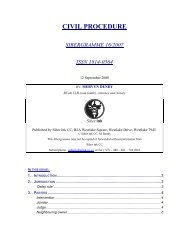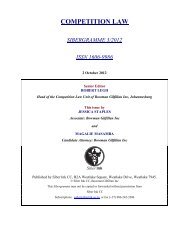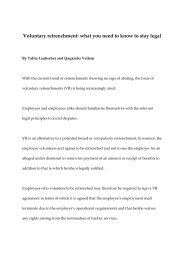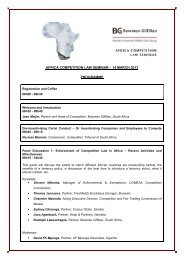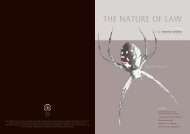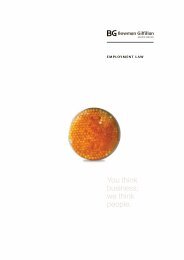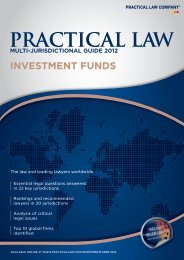SIBERGRAMMES 1 - Bowman Gilfillan Attorneys
SIBERGRAMMES 1 - Bowman Gilfillan Attorneys
SIBERGRAMMES 1 - Bowman Gilfillan Attorneys
- No tags were found...
Create successful ePaper yourself
Turn your PDF publications into a flip-book with our unique Google optimized e-Paper software.
Page 4 ISSN 1814 – 0564 CIVIL PROCEDURE SG 3/20083. PARTIESCurator bonisThe husband of the respondent in Spangenberg & another v De Waal [2008] 1 All SA162 (T) had sustained head injuries in a motor collision, for which he had receivedsubstantial damages. As a result of his injuries, the husband was declared by theWitwatersrand Local Division to be of unsound mind and incapable of managing hisaffairs. The second applicant had been appointed as curator bonis to him. Some yearslater, the husband relocated to the Western Cape in order to live his mother, and decidednot to return to the common home he shared with the respondent. He indicated that he nolonger wished to be married to the respondent, and that he intended to divorce her and tostay with his mother. No divorce action was, however, instituted, although therespondent, believing such an action to be imminent, applied for, and obtained by default,an order in terms of uniform rule 43 directing the second applicant to pay maintenance tothe respondent out of the husband’s assets, as well as a contribution towards therespondent’s costs in the proposed divorce proceedings. In an application by the secondapplicant and a curator ad litem who was appointed to represent the husband at theinstance of the second applicant, the question arose whether the curator bonis, in theperiod prior to the appointment of a curator ad litem, had the locus standi to institutedivorce proceedings on the husband’s behalf.After quoting extensively from the judgment in Ex parte AB 1910 TPD 1332, to theeffect that a curator bonis lacks locus standi to institute such proceedings,Conradie AJ held that the fact that fault is no longer a requirement for a divorce to begranted does not justify a deviation from the decision in AB and does not allow a curatorbonis to have locus standi in divorce proceedings. The curator bonis, if he were to havehad locus standi, would have alleged that the husband’s marriage with the respondent hadbroken down irretrievably. And it would most probably have been more difficult for thecurator to prove irretrievable breakdown of the marriage than it would have been to provefault as required formerly (sc before the coming into operation of the Divorce Act 70 of1979) (at 167h—i). More often than not, evidence of the irretrievable breakdown of amarriage was emotional rather than factual in nature. When a spouse stated that his or hermarriage had irretrievably broken down, he or she was making ‘a statement of the heart’rather than a statement of fact. While there were certainly facts like adultery and violencewhich could be proved in order to demonstrate that a marriage had broken downirretrievably, it was very difficult for an outsider to prove that an individual nolonger loved or respected his or her spouse. It was not possible for an outsider to beable to gauge whether a spouse was prepared to forgive his marriage partner despitewhatever offence his partner had committed. What appeared to be unforgivable for oneperson was tolerable for another, given his particular circumstances. The fabric that kepta marriage from breaking down was no doubt unique to every marriage (at 167i—168b).Even though marriage, as an institution, was today much more secular in nature than atthe time of AB’s case, and even though divorce was much more prevalent and certainlymore socially acceptable than then, the deep personal nature of marriage had not changed,Page 4 of 16 § Civil Procedure SG 3/2008© Siber Ink CC, M DendyThis Sibergramme may not be copied or forwarded without permission fromSiber Ink CC






